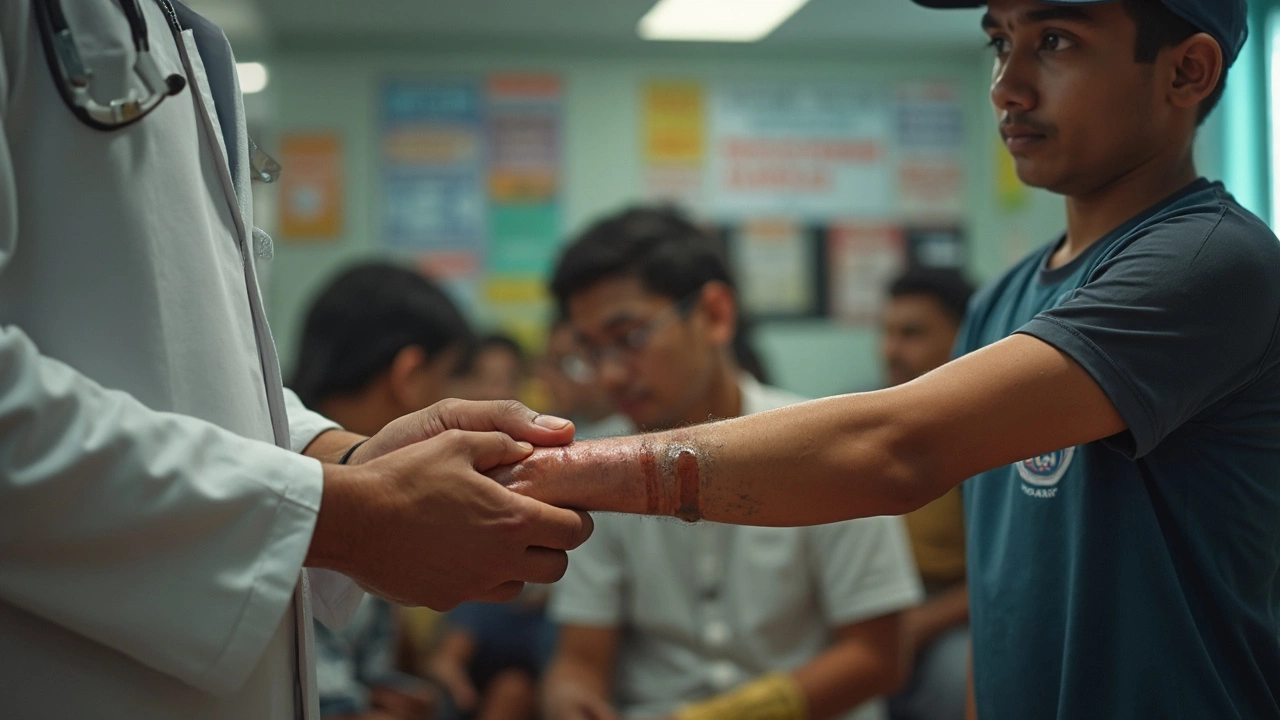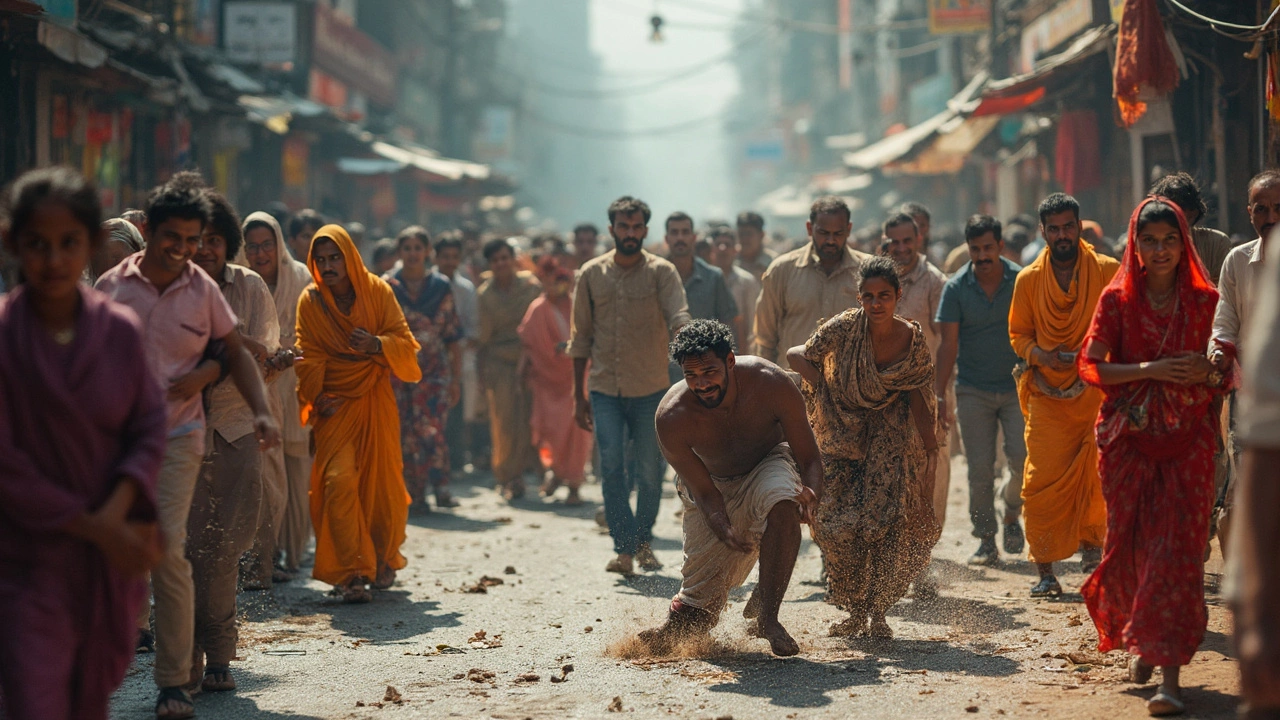Picture this: a regular Sunday afternoon, you're at Cubbon Park, and someone shouts for help. You see a cyclist on the ground, clutching an arm bent at a weird angle. Not a rare sight, right? Broken bones, or fractures, pop up in emergency rooms more than any other orthopedic problem. It doesn't matter if you’re a daredevil, an athlete, or just tripped while texting—fractures can hit anyone, anywhere, anytime. So, why do these cracks and breaks lead the charts? Because our bones, as tough as they seem, can only bend so much before they snap.
Why Fractures Are the Number One Orthopedic Emergency
Let’s be real here—a lot of orthopedic emergencies exist, but fractures beat all the rest simply because accidents are a part of life. Falls, traffic collisions (India sees over 400,000 road accidents a year, by the way), sports mishaps, and everyday slips can wreck a perfectly normal day. A sudden impact or awkward twist forces bones past their breaking point. The numbers don’t lie: research from major trauma centers in Bangalore, Mumbai, and Delhi all show fractures taking the top spot in ER visits.
The human skeleton has 206 bones, and every single one is vulnerable. While kids often break arms at playgrounds, the elderly are more likely to fracture a hip just by stumbling at home. There’s a natural bias here—a child’s bones are more flexible, so some impacts cause greenstick fractures rather than complete breaks. On the other hand, as we age, our bones get brittle (osteoporosis is a beast), which leaves even a small fall capable of causing a nasty break.
The severity of a fracture can range from a thin crack (called a "hairline" or "stress" fracture) to a complete break with bone poking out (open or compound fracture). Doctors treat both as emergencies, but compound fractures add the risk of infection, blood loss, and nerve damage. With so much variety and risk, medical staff have to act quickly to assess, stabilize, and treat the injury. You'd be surprised how every minute counts. Quick intervention means less pain, a smaller risk of long-term problems, and often a much easier recovery.
Spotting a Fracture: Key Symptoms You Should Never Ignore
Not all fractures scream for attention—some are subtle but dangerous. Obvious signs? A limb looks crooked or shorter, there's exposed bone, or you hear a nasty snap at the moment of injury. But sometimes, the symptoms are sneaky: pain that keeps getting worse, swelling that balloons up, bruising that spreads, or a joint that won’t move like before. A surprising stat: Over 30% of people with a fracture actually walk into emergency wards on their own, not realizing how bad it is.
Here’s a simple checklist that can help you spot a possible fracture:
- Intense pain, especially when moving the limb or putting weight on it
- Swelling and tenderness at the site of injury
- Visible deformity or unnatural angle
- Bruising or discoloration appearing minutes after the impact
- Loss of function—can’t grip, walk, or bear weight
- Grating sounds or feeling “crunchy” under the skin
- Numbness, tingling, or pale fingers/toes (can signal nerve or blood vessel injury)

First Aid for Fractures: What To Do Before Help Arrives
Panicking never helps, but acting fast does. First aid steps for suspected fractures can mean the difference between a smooth recovery and long-term complications. Getting it right isn’t rocket science, but missing a step could do more harm than good.
Here are the basics:
- If there’s bleeding, apply gentle pressure with a clean cloth. Don’t press directly on the bone if it’s sticking out.
- Keep the injured limb still. Use a splint (even a rolled-up newspaper works) and secure it above and below the break, but never force bones back into position.
- For open fractures, cover the wound with sterile gauze or a clean cloth. Avoid any attempts to push bone fragments inside.
- Raise the injured body part if possible—helps control swelling.
- Apply ice packs (wrapped in a cloth) for 10-15 minutes at a time. This helps reduce swelling and pain but never place ice directly on the skin.
- Don’t give food or water if surgery might be needed. It’s better to play safe.
- Call for an ambulance if you suspect head, neck, or back injuries, or if the person is unconscious, pale, or has trouble breathing.
Mistakes happen more often than you’d think. For example, some people try to “walk it off” and end up making a minor crack much worse. Others use super-tight ties for splints, which block blood flow. If in doubt, do less rather than more, and never hesitate to call a professional.
What Happens in the ER: Modern Treatment and Recovery for Fractures
Once you reach the hospital, doctors jump into detective mode with quick checks and X-rays. They look for the type of fracture, whether it’s displaced (bones out of line), open (bone sticking out), or involves a joint. Here’s a quick breakdown of the main fracture types using a handy orthopedic emergency chart:
| Fracture Type | Description | Common Example |
|---|---|---|
| Closed/ Simple | No wound, bone stays inside the skin | Wrist fracture from falling on outstretched hand |
| Open/ Compound | Bone breaks through the skin | Car accident with exposed shin bone |
| Comminuted | Bone shatters into several pieces | Elderly hip fracture |
| Greenstick | Partial fracture, common in kids | Playground falls |
| Stress/ Hairline | Tiny cracks, often from overuse | Runner’s shin splints |
Immediate pain relief tops the doctor’s to-do list. They might use splints, casts, or boots to keep everything stable. For nasty or very displaced fractures, surgery often follows—usually with rods, plates, or screws, all to realign and hold the bones while they heal.
Here’s where it gets real: healing takes time. Your body works overtime building new bone, a process that can take from six weeks up to several months. Physical therapy kicks in soon after the pain quiets down. Moving too little increases stiffness and weak muscles, while moving too soon could lead to crooked healing. It’s a tricky dance, and that's why following your doctor’s timeline isn’t optional.
Tips for a smoother recovery:
- Listen to your physician and physiotherapist—they know their stuff.
- Eat well, especially foods rich in protein, calcium, and Vitamin D.
- Keep your cast dry and clean; don’t poke inside with pens or hangers (happens more than you’d believe!).
- If your fingers or toes go numb or turn blue, get to the hospital ASAP.
- Be patient with yourself. Bones heal, but pushing too hard can set you back.
Broken bones might top the list of orthopedic emergencies, but most people bounce back just fine when they get the right care from day one. Don't ignore warning signs or “tough it out”—get the help you need, and you’ll be back on your feet, typing with both hands, or cycling through Bengaluru's streets sooner than you think.
